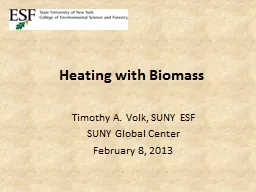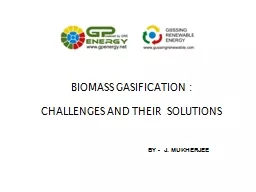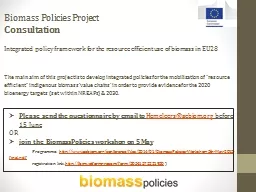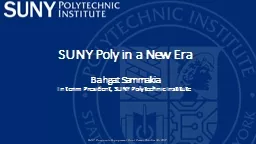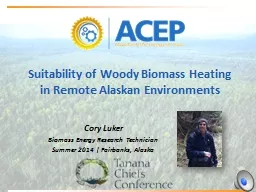PPT-Heating with Biomass Timothy A. Volk, SUNY
Author : trish-goza | Published Date : 2018-10-29
ESF SUNY Global Center February 8 2013 Outline What is biomass Biomass for heating Costs of biomass heating EIA 2011 Biomass is the single largest source of renewable
Presentation Embed Code
Download Presentation
Download Presentation The PPT/PDF document "Heating with Biomass Timothy A. Volk, SU..." is the property of its rightful owner. Permission is granted to download and print the materials on this website for personal, non-commercial use only, and to display it on your personal computer provided you do not modify the materials and that you retain all copyright notices contained in the materials. By downloading content from our website, you accept the terms of this agreement.
Heating with Biomass Timothy A. Volk, SUNY: Transcript
Download Rules Of Document
"Heating with Biomass Timothy A. Volk, SUNY"The content belongs to its owner. You may download and print it for personal use, without modification, and keep all copyright notices. By downloading, you agree to these terms.
Related Documents

